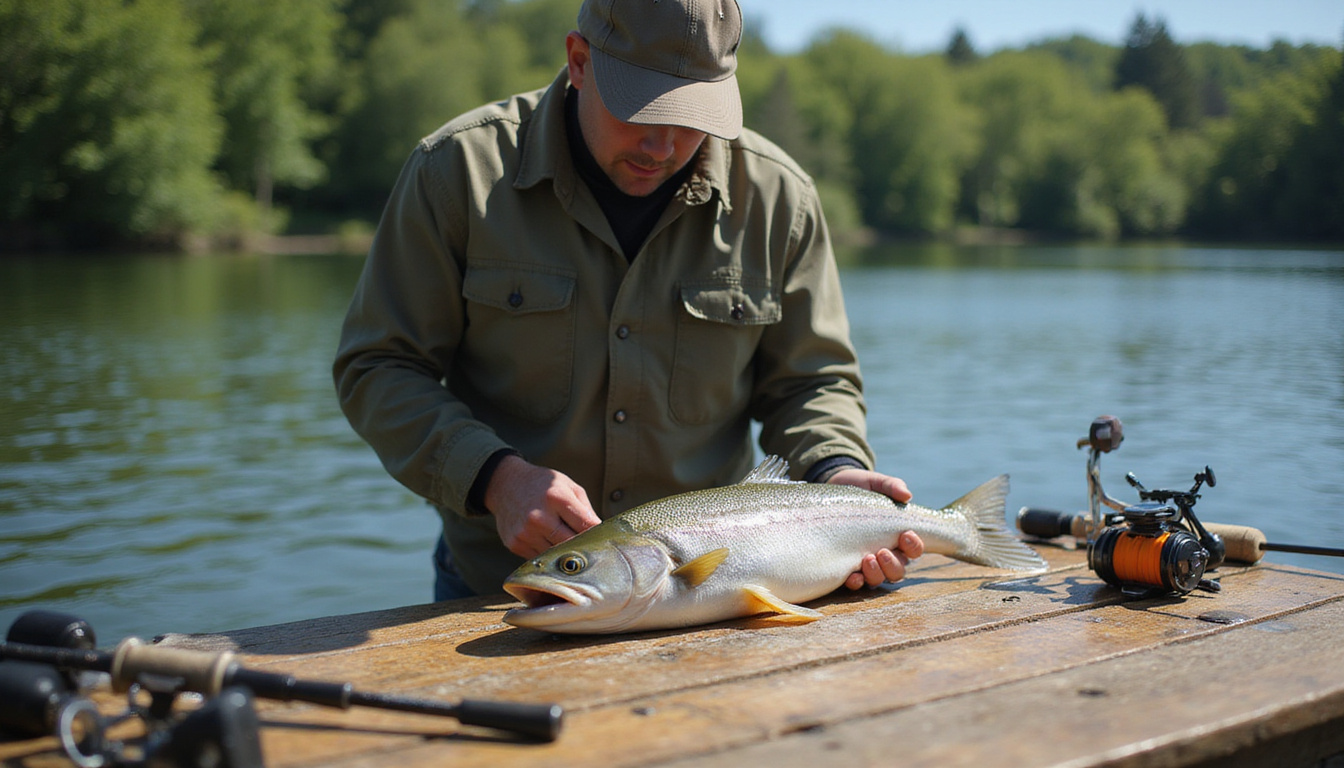
Mastering the Art of Cleaning and Filleting Freshwater Fish: A Step-by-Step Guide
On March 22, 2025 by Andy FordCleaning and filleting freshwater fish might seem daunting to the uninitiated, but mastering this essential skill can elevate your fishing experience and ensure a delicious meal.
In this comprehensive guide, we will delve into how to clean and fillet freshwater fish properly, a skill that every angler should possess.
Whether you’re preparing for a fishing trip or looking to enjoy a fresh catch at home, our step-by-step instructions will make the process both straightforward and enjoyable.
Mastering Saltwater Fishing: A Complete Guide to Choosing the Right Fishing Line

Key Takeaways
- Familiarize yourself with essential tools for efficient fish cleaning and filleting.
- Follow a detailed, step-by-step approach to clean freshwater fish effectively.
- Utilize proper techniques to maximize yield and minimize waste while filleting.
- Prioritize safety and freshness to ensure the best quality of fish after preparation.
- Practice makes perfect; repeat the process to master cleaning and filleting skills.
Understanding the Tools Needed for Cleaning and Filleting
Cleaning and filleting fish can seem like a daunting task, especially for newcomers to fishing or those who have never done it before.
However, understanding the essential tools needed for this process can simplify everything and result in perfectly cleaned and filleted freshwater fish.
To start with, you will need a sharp filleting knife, which is crucial for making precise cuts without damaging the flesh of the fish.
A good cutting board is also important, as it provides a stable surface to work on.
Additionally, having a pair of fish pliers can assist in removing any small bones.
A bucket or cooler for holding the fish during cleaning, as well as paper towels or a clean cloth for wiping down surfaces, are also recommended.
Understanding how to clean and fillet freshwater fish properly with these tools not only enhances your cooking experience but also ensures the fish is prepared safely and efficiently.
Step-by-Step Guide to Cleaning Freshwater Fish
Cleaning and filleting freshwater fish properly is an essential skill for any angler or seafood enthusiast.
This step-by-step guide will walk you through the process to ensure you can enjoy your catch while preserving its freshness and quality.
First, gather your tools: a sharp fillet knife, a cutting board, and a pair of gloves.
Start by placing your fish on the cutting board and rinsing it under cold water to remove any slime.
Next, make a clean cut behind the gills and down to the backbone on both sides to detach the head if desired.
Then, insert the knife at the base of the tail and run it along the spine, using gentle but firm pressure to separate the flesh from the bones.
Continue this action until the fillet is free.
Flip the fish and repeat on the other side until you have two clean fillets.
Remember to remove any remaining bones and skin for a perfect finish.
Following these steps on how to clean and fillet freshwater fish properly will help you enjoy your freshly caught meal without any hassle.
‘The key to cooking fish is to respect its texture and flavor, and that begins with how you prepare it. A clean, well-fileted fish is a canvas for all the culinary arts to come.’ — Unknown
Mastering Saltwater Fishing: A Complete Guide to Choosing the Right Fishing Line

Techniques for Properly Filleting Freshwater Fish
Learning how to clean and fillet freshwater fish properly is an essential skill for any angler or seafood enthusiast.
First, ensure you have the right tools: a sharp fillet knife, a cutting board, and a good pair of pliers.
Begin by placing the fish on the cutting board, making sure to cut the gills and bleed the fish beforehand for better taste and quality.
To fillet the fish, start at the base of the head, making a clean cut behind the pectoral fin, and then glide your knife along the spine towards the tail, staying close to the bones.
Flip the fish over and repeat the process on the other side.
Once you’ve removed both fillets, take the time to remove any remaining bones with your pliers.
Cleaning and filleting your catch not only enhances flavor but also helps preserve the freshness, making your meals much more enjoyable.
Mastering these techniques will elevate your fishing experience and ensure that you can serve the freshest fish possible at your next dinner.
Maintaining Freshness and Safety After Filleting
Maintaining freshness and safety after filleting is crucial for ensuring the quality of your catch.
When learning how to clean and fillet freshwater fish properly, it’s important to handle the fish with care right from the moment it’s caught.
Start by keeping your catch in a cooler surrounded by ice to minimize bacterial growth.
Once you’re ready to fillet, ensure your tools are clean and your workspace is sanitized.
As you fillet, remove all internal organs as they can spoil quickly and contaminate the flesh.
After filleting, rinse the fillets under cold water to remove any residual blood or slime, pat them dry with a clean cloth or paper towel, and store them in airtight containers.
This not only preserves the taste but also enhances safety by preventing cross-contamination and spoilage.
By understanding the nuances of how to clean and fillet freshwater fish properly, you can enjoy your fresh catch in delicious meals while ensuring it remains safe to eat.
100% Free Ai trading Bot Click here for yours!
